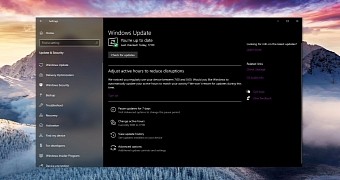As every other software release, the all-new Windows 10 October 2020 Update, or version 20H2, comes with its own series of known bugs, and this time there are four of them.
Why are these problems worth keeping an eye on? It’s all because all the known issues that Microsoft has already acknowledged can trigger an upgrade block, which means that Microsoft could eventually block a specific hardware configuration from receiving the feature update because of the increased likelihood of issues caused by a specific problem.
As mentioned, Windows 10 October 2020 Update comes with four different problems, and only one of them is listed as resolved. The following issues have already been acknowledged in Windows 10 October 2020 Update:
- When installing incorrectly formatted third-party drivers, you might receive an error
- Errors or issues during or after updating devices with certain Conexant audio drivers
- Errors or issues during or after updating devices with Conexant ISST audio drivers
- Issues when using Microsoft IME for Japanese or Chinese languages
The Conexant-related bugs are currently under investigation, while the third-party driver issue has already been resolved, according to Microsoft.
“When installing a third-party driver, you might receive the error, “Windows can’t verify the publisher of this driver software”. You may also see the error “No signature was present in the subject” when attempting to view the signature properties using Windows Explorer,” the company explains.
There are two reasons that could lead to the said error when installing a third-party driver on a Windows 10 device:
an improperly formatted catalog file is identified during validation by Windows. Starting with this release, Windows will require the validity of DER encoded PKCS#7 content in catalog files. Catalogs files must be signed per section 11.6 of describing DER-encoding for SET OF members in X.690. a driver catalog file extension is not one of the supported extensions.
Interestingly enough, while Microsoft has acknowledged the problem after the release of Windows 10 October 2020 Update, other versions of the operating system are impacted as well, and according to the company, you’ll find the same problem in Windows 10 version 1803 and newer. What’s more, Windows 8.1 users are likely to come across this bug too.
So what are you supposed to do if you discover this problem on your Windows device? Despite Microsoft marking the bug as resolved, the company actually claims that you should reach out to the manufacturer of the impacted hardware and ask for an updated driver. In other words, you need new drivers that support Windows 10 and the new version of the OS that you are trying to install.
“Next steps: If this happens you should contact the driver vendor or device manufacturer (OEM) and ask them for an updated driver to correct the issue,” the company explains.
The good news is that the list of known issues on Windows 10 isn’t big for the October 2020 Update, so it shouldn’t take too long before Microsoft manages to deal with them. But on the other hand, more problems could be added as the rollout of the update continues, especially as users come across other issues when they upgrade their devices.
Microsoft releases the October 2020 Update in stages, and this means that not everybody gets it on day one. The bugs mentioned above could be the ones triggered an upgrade block, which means that unless they are resolved, you shouldn’t be able to download the October 2020 Update from Windows Update, though other update methods would still be allowed (such as dedicated ISO images).

 14 DAY TRIAL //
14 DAY TRIAL //